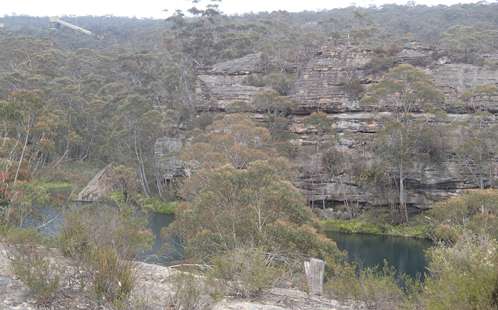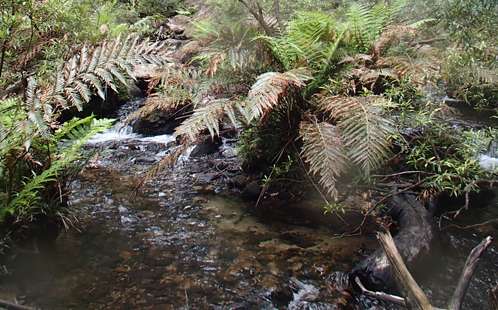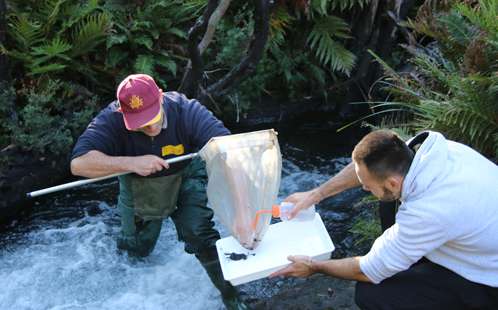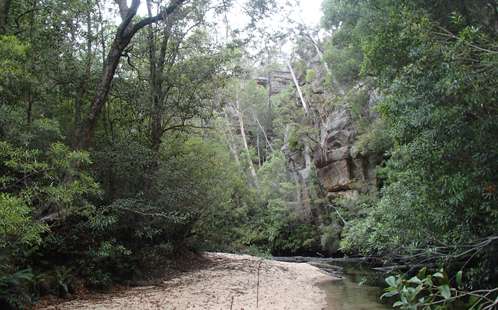Study finds toxic mine discharge flowing into Blue Mountains World Heritage Area

Toxic discharge from an underground Blue Mountains coalmine is causing major damage to protected local waterways, raising concerns about the regulation of mining in local heritage areas, according to a Western Sydney University study.
The study, published in the Journal of Water, Air, Soil Pollution, examined the active Clarence Colliery near Lithgow, where mine waste discharge and contaminated surface runoff flows into the protected World Heritage Conservation Area.
Dr Ian Wright, from the School of Science and Health, says underground coal mining has been a major industry in the Blue Mountains region, east of Sydney, for more than a century.
"Mining has supported the development of towns and power stations in the Blue Mountains, but the subsequent environmental impacts are ongoing," says Dr Wright.
"When the Federal Government nominated for the Blue Mountains area to be listed as a World Heritage Area, it highlighted the important role of the NSW government's Environment Protection Authority in regulating coal mines."
"However the ongoing toxicity uncovered by this study highlights the failure of statutory process across two levels of government, and the lack of appropriate planning approvals and ongoing environmental pollution licensing."

Through the analysis of macroinvertebrate health and heavy metal concentrations, the study measured the water quality and ecological health of the Wollangambe River and its tributaries near the point of the wastewater discharge. Beyond the boundaries of the mine, the majority of the study area falls within Blue Mountains National Park and Wollemi National Park.
The study found that taxonomic (family) richness of macroinvertebrates dropped by more than 63% from a mean of 8.7 families per sample at reference sites to 3.2 families at the sites below (0.2– 1.2 km) the mine. Such a reduction of family richness is larger than many coalmines regionally and internationally.
In addition, the concentrations of nickel and zinc that this study detected in the Wollangambe River below the mine discharge were at levels that are known to be hazardous for aquatic species.
The sulphate concentrations (178 mg/L) below the mine were found to be much higher than those reported downstream of four other coalmines in the Sydney Basin, which had a mean sulphate concentrations of 20.4 mg/L.

Dr Wright says the difference between the wastewater discharge and the otherwise near-pristine condition of the local river system is stark.
"The pollution from the mine extends at least 22 kilometres downstream, and includes thermal pollution, increased salinity and increased concentrations of zinc and nickel," says Dr Wright.
"The mine's waste discharge has strongly modified the river's ionic composition, and is causing major impairment of the aquatic ecosystem."
Dr Wright says he's been in regular contact with the EPA about the pollution over the past two years, regularly sharing emerging results with them.

"Clarence Colliery is located close to the boundary of, and discharges into, one of the most highly protected conservation areas and rivers in Australia," he says.
"There are various statutory mechanisms at a federal and state government level that can provide protection to the Wollangambe River, the Wollemi National Park and more broadly the Greater Blue Mountains region from major activities such as coal mining."
"From a development approval and environmental pollution licensing perspective, the existing statutory mechanisms have failed to adequately protect the waterways and ecosystems, in spite of Clarence Colliery undergoing 18 license variations and two clean up notices since 2001."
More information: Ian A. Wright et al. Coal Mine Water Pollution and Ecological Impairment of One of Australia's Most 'Protected' High Conservation-Value Rivers, Water, Air, & Soil Pollution (2017). DOI: 10.1007/s11270-017-3278-8
Provided by University of Western Sydney



















